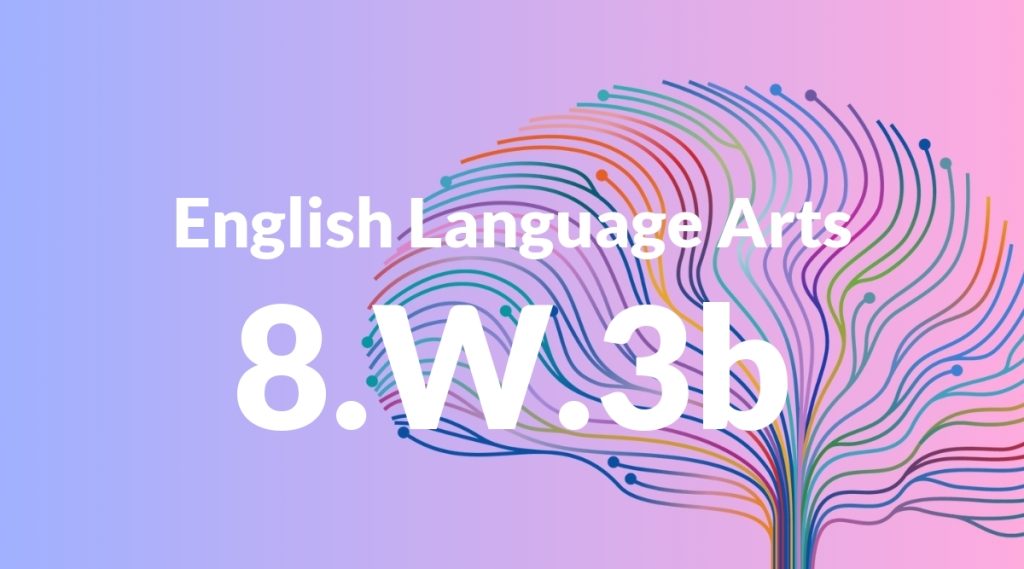Standard: 8.W.3 – Write narratives to develop real or imagined experiences or events using effective technique, relevant descriptive details, and well-structured event sequences.
Grade level: Grade 8
Subject: English Language Arts
Domain: Writing
Teacher Overview
This standard focuses on developing students’ abilities to write narratives that effectively convey real or imagined experiences. It emphasizes the use of effective techniques, relevant details, and well-structured sequences, which are crucial for creating engaging and coherent stories. Students should have a foundational understanding of basic sentence structure, paragraph organization, and the elements of a story such as setting, characters, and plot.
Students will progress to writing more complex narratives, analyzing narrative techniques in literature, and applying narrative skills in multimedia storytelling.
Common Misconception 1
A common misconception is that narratives only need dialogue to be engaging. However, relying solely on dialogue can make a story feel flat and underdeveloped.
Intervention 1
Encourage students to incorporate a mix of dialogue, descriptive details, and internal monologue. Use mentor texts to show how authors balance these elements.
Common Misconception 2
Another misconception is that narratives can be non-linear without clarity. This can lead to confusion for the reader if not handled properly.
Intervention 2
Introduce graphic organizers and story maps to help students plan their narratives with a clear structure, ensuring a logical flow of events.
Prerequisite Knowledge
Students should be familiar with basic sentence structure, paragraph organization, and the elements of a story such as setting, characters, and plot.
Subsequent Knowledge
After mastering this standard, students will be able to write more complex narratives, analyze narrative techniques in literature, and apply narrative skills in multimedia storytelling.
Instructional Activities
- Write a short story based on a prompt
- Create a personal memoir about a significant life event
- Develop a fictional diary entry from a character’s perspective
- Craft a detailed description of an event witnessed
- Write a script for a short play or skit




